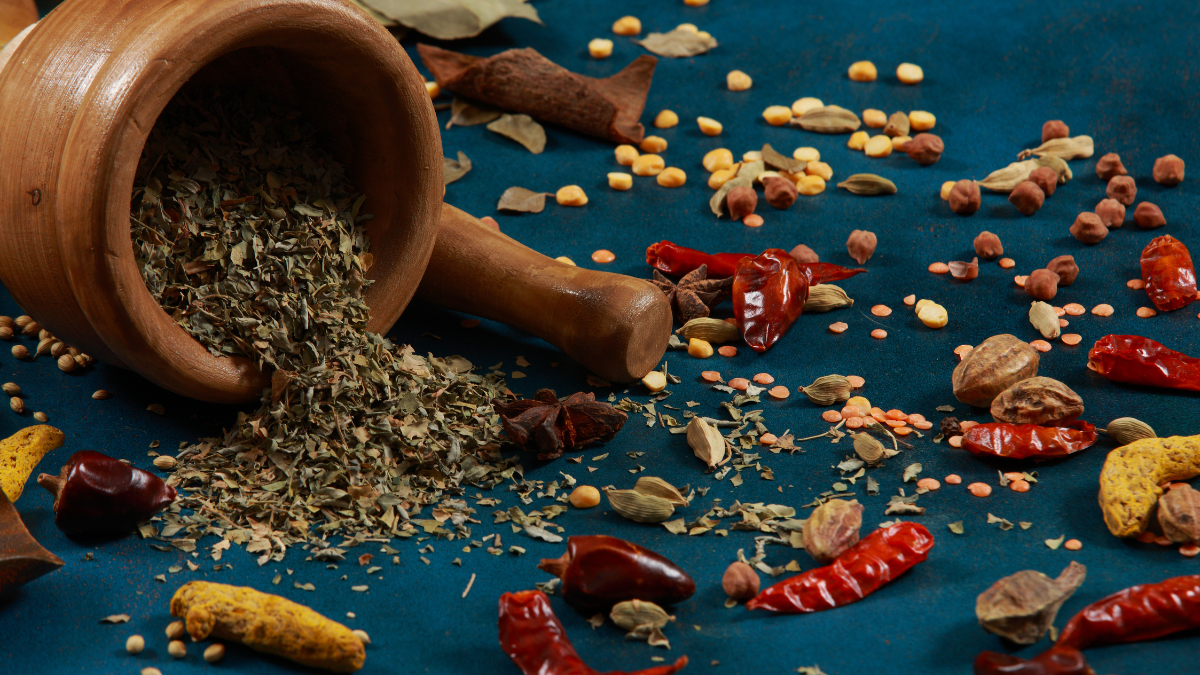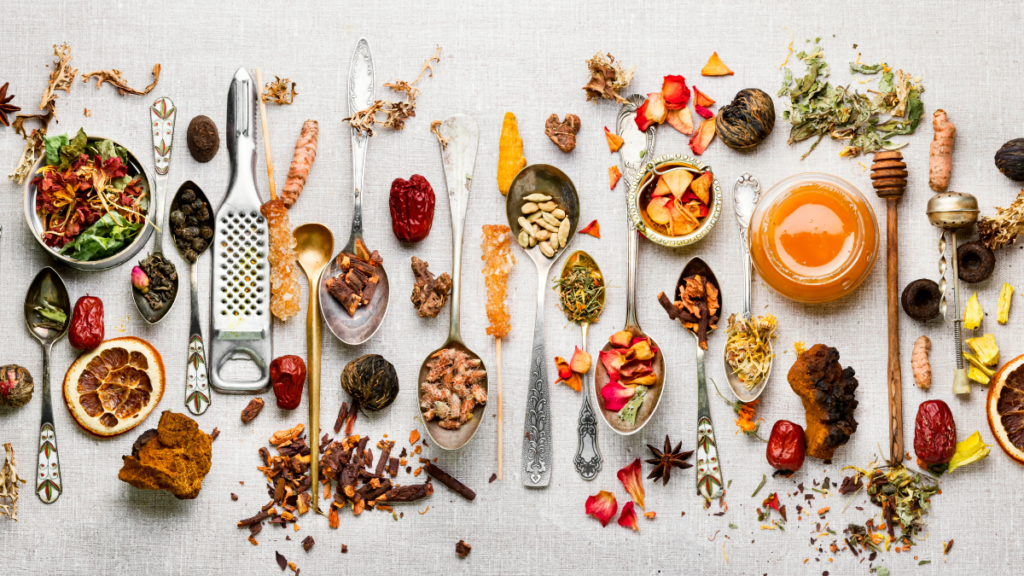Because they add a symphony of tastes to a wide range of recipes, mixed herbs are an essential part of every gourmet kitchen. They are a flexible mixture of different dry herbs, each adding a distinct flavor and perfume to the mixture. The composition, applications, advantages, and methods for creating your own blend at home will all be covered in this article’s exploration of the world of mixed herbs. A thorough understanding of mixed herbs will improve any home cook or seasoned chef’s dishes to unprecedented levels.
What Are Mixed Herbs?
Several dry herbs are usually combined and blended to create a powerful and well-balanced flavor profile known as mixed herbs. These mixes, which are widely utilized in European cooking, are a mainstay in many kitchens worldwide.
The exact composition can vary, but the most popular herbs included are:
- Basil
- Oregano
- Thyme
- Marjoram
- Rosemary
- Sage
These herbs are carefully chosen to create a harmonic blend that enhances the flavor of many different foods because of their complementary qualities.
The Composition of Mixed Herbs

Basil
It is well known that basil has a sweet, spicy flavor with undertones of clove and mint. It is a popular herb in Italian cooking, frequently seen in pizza, salads, and pasta sauces. Due to its fragrant qualities, basil is a useful addition to any mixture of herbs.
Oregano
The flavor of oregano is strong, earthy, and slightly bitter. It is an essential component in Mediterranean cuisine, especially Italian and Greek cuisine. Garlic complements meats and vegetables as well as tomato-based sauces.
Thyme
Thyme adds a faintly minty flavor with hints of earthiness and floweriness. It goes well with a wide range of foods, including roasts, veggies, and soups and stews. Thyme’s culinary use gains a healthy twist due to its antibacterial characteristics.
Marjoram
Marjoram has a sweet, moderate flavor with hints of citrus and pine. It’s a common seasoning for meats, sausages, and veggies. Because of its mild flavor, marjoram is an excellent herb for balancing mixtures.
Rosemary
Strong piney flavors with undertones of lemon and mint characterize rosemary. It is a typical seasoning for lamb, chicken, and roasted vegetables in Mediterranean cooking. The strong scent of rosemary gives mixed herb mixtures complexity.
Sage
Fresh lemon and eucalyptus notes complement the warm, somewhat spicy flavor of sage. It is frequently combined with fatty meats, stuffing, and sausages. The strong flavor of sage gives a distinctive touch to the combination and balances off the other herbs.
Uses of Mixed Herbs
You can utilize mixed herbs in so many different culinary applications since they are so versatile:
Seasoning
You can season meats, poultry, fish, and vegetables with a mixture of herbs. Their addition of flavor increases the inherent flavor of the ingredients. For a burst of flavor, sprinkle a mixture of herbs on top of roasts or grilled foods.
Soups and Stews
Soups and stews are elevated with a varied flavor character that comes from adding mixed herbs. The herbs combine nicely with the other components to provide a filling and delicious supper.
Sauces and Dressings
Blended herbs are ideal for bringing out the taste of salads and sauces. They add a herbaceous note that balances the major flavors of tomato sauces, creamy dressings, and vinaigrettes.
Bread and Doughs
Mixed herbs give bread and doughs, such as focaccia or pizza dough, an aromatic flavor that improves the finished product. The tastes of the herbs seep into the dough, making for a wonderful meal.
Marinades and Rubs
Vegetable and meat rubs and marinades benefit greatly from the use of mixed herbs. The components are infused with rich, aromatic flavors by the herbs as they permeate them.
Health Benefits of Mixed Herbs
In addition to being used in cooking, blended herbs provide several health advantages.
Antioxidant Properties
Numerous herbs found in mixed mixes, like rosemary and oregano, are high in antioxidants. By lowering the body’s oxidative stress, these substances lower the chance of developing chronic illnesses.
Anti-Inflammatory Effects
The anti-inflammatory qualities of herbs like thyme and sage can aid in reducing inflammation and enhancing general health. Regular use of these herbs can help support a more robust immune system.
Digestive Health
Herbs that are mixed, especially basil and marjoram, can help with digestion. They are advantageous for digestive health because they increase the synthesis of digestive enzymes and lessen gastrointestinal pain.
Antimicrobial Properties
Some herbs that are used in mixed blends, such oregano and thyme, have antibacterial qualities. They can enhance general health and wellbeing by serving as a barrier against bacterial and fungal diseases.
How to Make Your Own Mixed Herbs Blend
By making your own homemade mixed herb blend, you may personalize the flavors to your taste.
For your reference, here is a basic recipe:
Ingredients
- 2 tablespoons dried basil
- 2 tablespoons dried oregano
- 2 tablespoons dried thyme
- 1 tablespoon dried marjoram
- 1 tablespoon dried rosemary
- 1 tablespoon dried sage
Instructions
- Measure the Herbs: As directed by the amounts listed, measure out each dry herb.
- Combine the Herbs: Gather all of the dried herbs into a basin.
- Mix Well: In order to distribute the herbs equally, stir them all together.
- Store: Place the blended herbs in an airtight receptacle.
Usage Tips
- Sprinkle over Roasts: Grilled and roast meats can be seasoned with your own handmade mixed herbs.
- Enhance Sauces: To enhance the taste of your sauces and soups, add a teaspoon of the mixture.
- Bread Dough: To give bread dough a hint of flavor, mix one spoonful in.
Conclusion
Because they offer a fusion of flavors that complement a broad range of foods, mixed herbs are a necessary component of any kitchen. Mixed herbs are very easy to use and quite adaptable; they can be used for anything from seasoning meats to making tasty soups and sauces. By being aware of the characteristics and advantages of mixed herbs, you may enhance your cooking by making the most of these flavorful combinations. To taste the entire spectrum of flavors that mixed herbs have to offer, try creating your own blend at home.
Also Read :- Upma Recipe: A Comprehensive Guide to the Perfect Breakfast Delight


